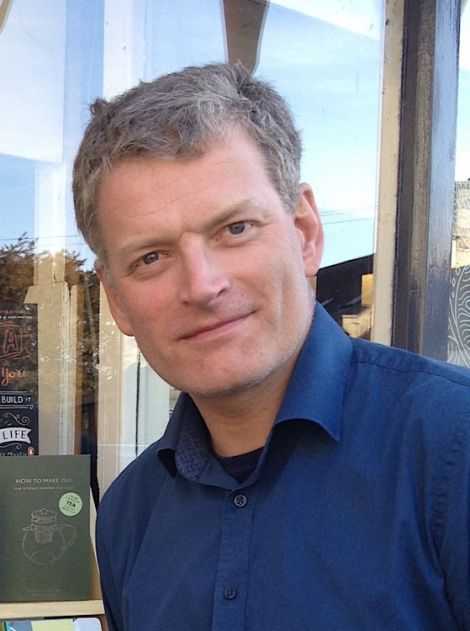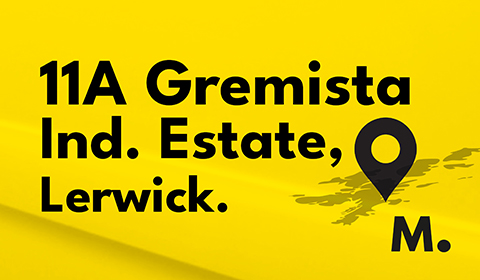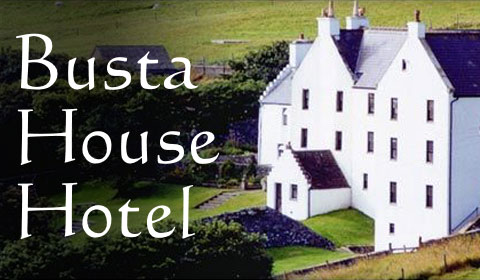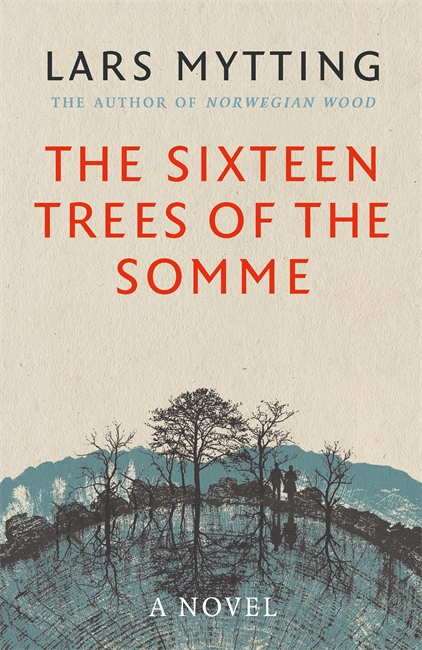Reviews / An epic story about personal and communal guilt
THE LATEST novel by award-winning Norwegian author Lars Mytting, The Sixteen Trees of the Somme, was published last week. It is set in Norway, France and in Shetland. James Mackenzie read it for us:
Well now I know what a turquoise turtle knot is, and where to acquire Sandalwood scent (Truefitt and Hill). This I did not expect in a novel, in which – the publishers tell us – that the narrator Edvard’s “desperate quest to unlock [his] family’s secrets takes him on a long journey – from Norway to the Shetlands [sic], and to the battlefields of France – through most of a century, and to the discovery of a very unusual inheritance.”
This, and the title of the book, intrigued me, in spite of my feeling overwhelmed by so much contemporary media coverage of the avoidable carnage that took place a hundred years ago. What, after all, could merit the inclusion of the Shetland Islands in such a book about trees, even if there were only 16 of them?
Lars Mytting is already well known in and outside his native land for his previous, non-fictional, book Norwegian Wood-Chopping, Stacking and Drying Wood the Scandinavian Way, which has won accolades for its wisdom and insight into the world of trees and their uses, primarily as firewood.
It is perhaps not surprising then that timber, or more accurately its aesthetic properties (when subjected to varying barbarous human activities) features as a motif throughout this novel. (Yes, barbarous, because we learn that Norwegian flame-birch is created by strangling the stems of trees with iron bands, and that the eponymous ones are considered beautiful – and extremely valuable – due to the dire effect on them of a poisonous gas, ironically coloured green, used in the battle of the Somme.)
So why these islands? The journey is long indeed in both time and place, so we have to endure the atrocities of WWII in Nazi-occupied France and Belgium as well, and not surprisingly the Shetland Bus, although merely a “bit-player”. This is the connection between Norway and here.
Become a member of Shetland News
Unst, and its offshore islet of Haaf Gruney, provide most of the setting for Edvard’s obsessive quest to find out the history of his cabinet-maker uncle Einar, and ultimately what happened, and why, to his parents – who mysteriously died in 1971 near to the site of the 16 trees by the River Somme, leaving their three-year old son orphaned and to be brought up by his grandfather Sverre on a potato farm in Norway.
If that sounds complicated or convoluted, it’s not the half of it.
Haaf Gruney, it turns out, was inhabited by Uncle Einar during and after WW2, and here Edvard briefly and intermittently, sets up house.
A large, bizarrely constructed mansion, Quercus (= Oak) Hall, which contains a tall, once glass-roofed arboretum, stands above the cliffs of eastern Unst, the seat of the Winterfinch family, wealthy Edinburgh timber merchants. In these unlikely surroundings Edvard meets Gwen (dolyn), a young woman of impeccably “well-bred” taste (hence my opening paragraph), who drives a dubiously seaworthy motor launch between the islands.
There is also a retired hairdresser in St. Sunniva Street, Lerwick, who has tales to tell of Einar, and who dresses in pre-Raphaelite style.
Meanwhile Edvard’s long-suffering girlfriend Hanne, whom he temporarily forsakes in the little town of Saksum, gamely looks after the farm after his grandfather suddenly expires, and he decides to venture abroad. She is juxtaposed in the story, and in the narrator’s mind – and body – with the exotic Gwen. One often transposes into the other in these erotically charged encounters, which are almost described in Mills and Boon terms.
There is so much to-and-fro-ing in time and place that one forgets quite what year Edvard is in when he visits Shetland. (it is, I believe, 1991, when he is 23 years old). There is a ferry between Bergen and Lerwick. There is Britain’s most northerly fish and chip shop in Brae. Clive’s Record Store stocks a 12″ single of the Pogues’ Fairytale of New York. The Clash, Runrig and Big Country are favourite bands of both farmer/ backwoodsman Edvard and the upper class Gwen.
But we learn also that Captain Flint’s was the only pub to allow access to the late Einar when he was on a prolonged post-war alcoholic bender.
There is an astonishingly colourful and complimentary account of a meal in one of Lerwick’s popular eateries, where, when the food arrives, Edvard is plunged into a hot bathtub and emerges with his eyes opened to a better world…
The author is, it has to be said, overly fond of simile and metaphor: the same meal induces sweating, and he describes it as music building to a crescendo. Then, as the actual background music changes, he doesn’t recognise himself, as if his shell had fallen off…
Finally he describes this music as plastic while he believes real music is steel, and as a façade where there ought to be a brick wall. All this in a paragraph or two…
What else? There is an obvious fascination with old makes and models of cars. There is a retired French female detective. Grandfather has a legacy of wartime pro-Nazi exploits, which still set him apart from his neighbours. A visit to a posh gunsmith in Edinburgh is lovingly described. More French and Belgian surprises spring out.
Ravensbruck concentration camp turns out to be where Edvard’s mother (also French) was born. So the horrors of 20th century world war, now stretched to Germany, are ever in the background, and sometimes erupt into vivid, visceral and no doubt well-researched descriptions of frontline battles.
But is this not, to use an inept phrase, like overkill? Have we not seen or read it all before, at least in this country where remembrance is so often tinged with celebration (funny co-incidence that the “Dunkirk spirit” should be invoked in these Brexit days).
Of course Norway was a Nazi-occupied country in WW2, and its people suffered horrendous, brutal and divisive consequences, that UK citizens did not have to endure (that is not to belittle their experiences). Perhaps there is still a reckoning, and a healing, to be negotiated and realised, and this is what Mytting tries, ambitiously, to achieve, by exhuming and redeeming both personal and communal guilt.
It’s just that, for this reviewer, he has stretched himself too far…Shetland could possibly have been left out of the book, without adverse effect. Some fairly sharp editing would also have been in order.
Nonetheless, as a Shetland resident, I enjoyed recognising island landmarks – and, as ever, and ever so trivially – pin-pointing historical and geographical inaccuracies, or questionable phenomena: I have seen boat houses on the Norwegian coast such as Mytting describes on Unst, where I doubt if they would be a practical proposition.
I hope other readers who appreciate or treasure Shetland and its inhabitants and visitors as depicted in fiction will derive similar enjoyment – but without losing sight of the overall grand theme of The Sixteen Trees of the Somme.
The Sixteen Trees of the Somme by Lars Mytting, tr. by Paul Russell Garrett. MacLehose Press 2017, £16.99.
Notes:
- The copy reviewed was an uncorrected proof – “not for resale or quotation.” There were many typographical errors in this copy, and this did not help an objective reading of the book.
- The original book Svøm med som drukner, which (just as intriguingly) means in English Swim with those who drown, was published in Norway in 2014. It has won the Norwegian National Booksellers’ Award, and apparently the film rights have been negotiated. It has obviously appealed to the Norwegian public, and it is rumoured that visitors from our neighbouring country have made novel-inspired pilgrimages to Shetland and to Unst…
Become a member of Shetland News
Shetland News is asking its readers to consider paying for membership to get additional perks:
- Removal of third-party ads;
- Bookmark posts to read later;
- Exclusive curated weekly newsletter;
- Hide membership messages;
- Comments open for discussion.
If you appreciate what we do and feel strongly about impartial local journalism, then please become a member of Shetland News by either making a single payment, or setting up a monthly, quarterly or yearly subscription.































































